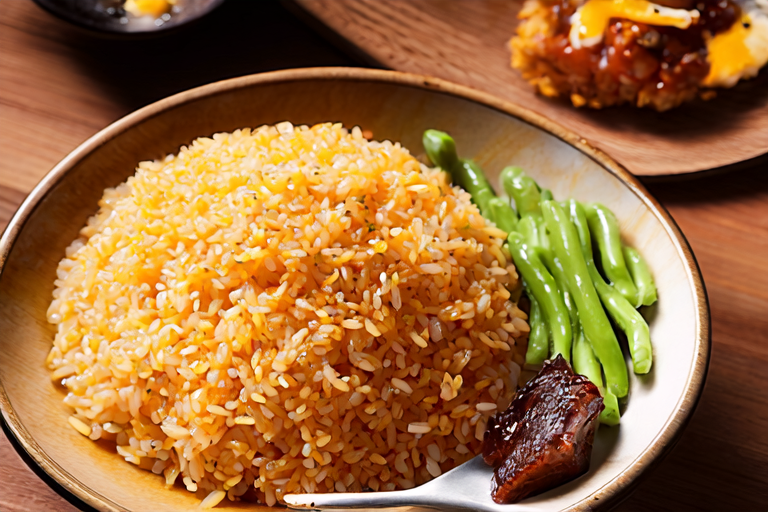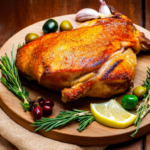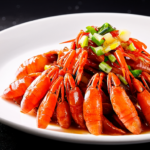Elevating Rice: The Ultimate Eat with Rice Experience
Welcome to the world of rice, the humble grain that has captivated palates and nourished civilizations for millennia. From the delicate jasmine rice of Thailand to the robust Arborio rice of Italy, each variety brings its unique texture, aroma, and flavor to the table. In this article, we will explore the art of elevating rice, showcasing how it can be transformed into an exquisite culinary experience. Whether you’re a seasoned chef or a home cook, these recipes and techniques will inspire you to take your rice dishes to new heights.
The Science of Perfectly Cooked Rice
Understanding the science behind cooking rice is essential for achieving optimal results. Rice grains are composed of starch, protein, and fat. When heated in water, the starches absorb moisture, causing the grains to swell and soften. The key to perfectly cooked rice lies in balancing the ratio of water to rice and controlling the heat.
Factors Affecting Rice Cooking:
- Water-to-Rice Ratio: Different types of rice require varying amounts of water. For example, long-grain rice typically needs a 2:1 ratio, while short-grain rice may need as much as 2.5:1.
- Heat Control: Maintaining a steady temperature prevents overcooking or undercooking. Using a rice cooker or a pot with a tight-fitting lid helps retain steam, ensuring even cooking.
- Rinse the Rice: Rinsing removes excess starch, which can lead to sticky rice. This step is especially important for varieties like basmati and jasmine.
Selecting the Right Rice
The choice of rice is crucial to the success of your dish. Each type of rice has distinct characteristics that make it suitable for different cooking methods and pairings. Here are some popular varieties:
- Basmati Rice: Known for its long, slender grains and aromatic profile, basmati rice is ideal for pilafs and biryanis. It expands when cooked, creating fluffy, separate grains.
- Jasmine Rice: With its fragrant floral notes, jasmine rice pairs beautifully with curries and stir-fries. Its soft, slightly sticky texture makes it perfect for dishes where grains stick together.
- Aromatic Rice: Varieties like Thai Hom Mali and Indian Sona Masoori offer a subtle sweetness and nutty flavor, making them versatile choices for both savory and sweet dishes.
- Short-Grain Rice: Short-grain rice, such as Arborio and sushi rice, is prized for its creamy texture and ability to absorb flavors. It’s the star ingredient in risottos and sushi.
Cooking Techniques for Elevating Rice
To elevate your rice dishes, consider incorporating advanced cooking techniques that enhance flavor, texture, and presentation. Here are some innovative methods to try:
Pressure Cooking
Pressure cooking is an efficient way to prepare rice quickly while preserving its nutrients. The high pressure creates steam, which cooks the rice faster than traditional boiling methods. This technique is particularly useful for busy weeknights when time is of the essence.
Ingredients:
- 1 cup of rice
- 1.5 cups of water
- Salt to taste
Instructions:
1. Rinse the rice under cold water until the water runs clear.
2. Add rinsed rice, water, and salt to a pressure cooker.
3. Close the lid and set the pressure cooker to high for 4 minutes.
4. Let the pressure release naturally for 10 minutes, then quick-release any remaining pressure.
5. Fluff the rice with a fork before serving.
Sous Vide Rice
Sous vide cooking involves sealing rice in a vacuum bag and immersing it in a precisely controlled water bath. This method ensures even cooking and infuses the rice with rich flavors. Sous vide rice is particularly well-suited for dishes like paella and risotto.
Ingredients:
- 1 cup of rice
- 2 cups of water
- 1 tablespoon olive oil
- Salt and pepper to taste
Instructions:
1. Rinse the rice under cold water until the water runs clear.
2. Combine rice, water, olive oil, salt, and pepper in a vacuum-sealable bag.
3. Seal the bag using a vacuum sealer or by submerging it in water.
4. Place the sealed bag in a sous vide water bath preheated to 195°F (90°C) for 45 minutes.
5. Remove the bag from the water bath and drain the rice.
6. Heat a skillet over medium-high heat and toast the rice for 2-3 minutes to add a slight crunch.
Smoked Rice
Smoking rice imparts a smoky, earthy flavor that adds depth to both savory and sweet dishes. You can use a charcoal grill, smoker, or even a stovetop smoker to achieve this effect.
Ingredients:
- 1 cup of rice
- 1 tablespoon olive oil
- Salt to taste
Instructions:
1. Preheat your smoker or grill to 250°F (120°C).
2. Rinse the rice under cold water until the water runs clear.
3. Toss the rice with olive oil and salt in a large bowl.
4. Spread the rice evenly on a smoker-safe tray or foil-lined baking sheet.
5. Smoke the rice for 30-45 minutes, or until it takes on a golden hue and a smoky aroma.
6. Serve smoked rice as a side dish or incorporate it into salads, soups, or casseroles.
Recipe: Elevated Rice Pilaf
This elevated rice pilaf combines the nutty flavor of wild rice with the delicate aroma of saffron. Infused with garlic, lemon, and herbs, this dish is sure to impress at your next dinner party.
Ingredients
- 1 cup wild rice
- 1 cup long-grain white rice
- 2 cups chicken or vegetable broth
- 1/2 teaspoon saffron threads
- 2 tablespoons olive oil
- 1 small onion, finely chopped
- 3 cloves garlic, minced
- 1 tablespoon fresh thyme leaves
- 1 tablespoon fresh rosemary, chopped
- 1 tablespoon fresh parsley, chopped
- 1 tablespoon lemon zest
- Salt and pepper to taste
Instructions
- Rinse the wild rice and long-grain white rice under cold water until the water runs clear.
- In a small bowl, soak the saffron threads in 2 tablespoons of warm water for 10 minutes.
- Heat the olive oil in a large saucepan over medium heat. Add the chopped onion and sauté until translucent, about 5 minutes.
- Add the minced garlic and sauté for another minute, being careful not to burn the garlic.
- Add the rinsed rice and stir to coat the grains with the oil. Toast the rice for 2-3 minutes, stirring frequently.
- Pour in the chicken or vegetable broth and the saffron-infused water. Bring the mixture to a boil.
- Reduce the heat to low, cover the pan with a tight-fitting lid, and simmer for 35-40 minutes, or until the rice is tender and all the liquid has been absorbed.
- Remove the pan from the heat and let it sit, covered, for 10 minutes.
- Fluff the rice with a fork and stir in the fresh thyme, rosemary, parsley, and lemon zest. Season with salt and pepper to taste.
- Serve the elevated rice pilaf hot, garnished with additional herbs if desired.
Pairing Rice with Proteins and Vegetables
Rice is incredibly versatile and pairs well with a wide range of proteins and vegetables. Here are some suggestions to complement your elevated rice dishes:
Protein Pairings
- Fish: Grilled salmon, halibut, or sea bass pairs beautifully with aromatic rice varieties like jasmine or basmati. The fish’s delicate flavor enhances the rice’s subtle sweetness.
- Poultry: Chicken, turkey, and duck are excellent companions for short-grain rice dishes like risotto. Their richness complements the creamy texture of the rice.
- Meat: Beef, lamb, and pork work well with long-grain rice. The robust flavors of these meats contrast nicely with the lightness of the rice.
Vegetable Pairings
- Leafy Greens: Spinach, kale, and Swiss chard are perfect for tossing into rice dishes or serving alongside them. Their earthy flavors and nutrient density make them ideal accompaniments.
- Root Vegetables: Carrots, parsnips, and sweet potatoes add natural sweetness and color to rice-based dishes. They also provide a satisfying texture when roasted or sautéed.
- Legumes: Lentils, chickpeas, and black beans are excellent sources of plant-based protein. Incorporating legumes into rice dishes creates a complete meal that’s both filling and nutritious.
Conclusion
Rice is more than just a staple food; it’s a canvas for culinary creativity. By understanding the science of cooking rice, selecting the right variety, and experimenting with advanced techniques, you can elevate your rice dishes to new heights. Whether you’re preparing a simple pilaf or an elaborate risotto, these tips and recipes will help you create memorable meals that satisfy both your palate and your guests. Happy cooking!


